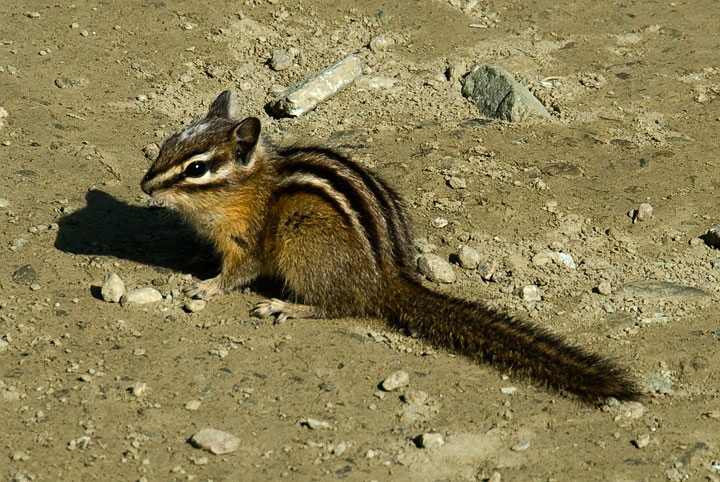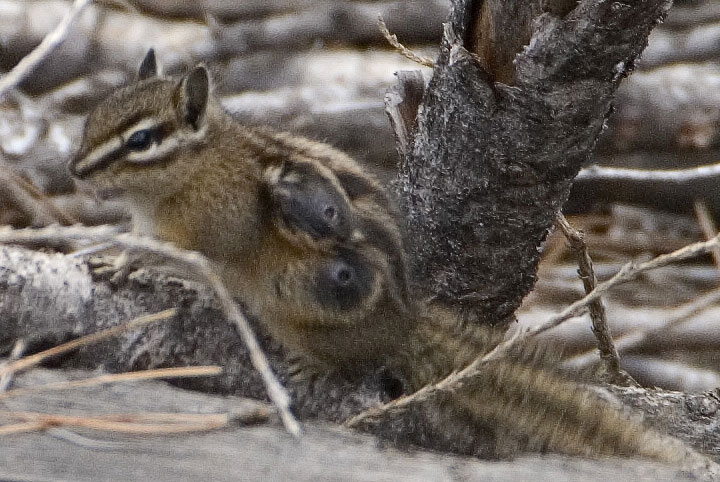Chipmunks
The Chipmunk is a small squirrel which spends most of its time on the ground and builds extensive burrows with multiple concealed entrances. It is readily distinguished from other squirrels by its small size, its tawny colour, and its black and white strips. There are three dark and two light strips on each side of the face and five dark and four white strips down the back. There is another squirrel with similar strips down the back—the Golden-mantled Ground Squirrel—but its strips do not extend across its face.
There are many species of chipmunks across the continent; the main one found locally is the Yellow-pine Chipmunk.
I remember chipmunks being very common around the Lake (elevation ~532 meters) when I was a child. When I settled here in retirement, I was disappointed to not find them in a similar abundance. Now, I can only seem to find them at somewhat higher altitudes: the ones on this page were at 1165 and 1000 meters.
 This Yellow-pine Chipmunk was sitting in the middle of a mountain road over 500 meters above the Lake. We both froze and eyed each other for a while.
This Yellow-pine Chipmunk was sitting in the middle of a mountain road over 500 meters above the Lake. We both froze and eyed each other for a while.
 The Yellow-pine Chipmunk is easily distinguished from other squirrels by having black and white strips which extend along its face to its nose.
The Yellow-pine Chipmunk is easily distinguished from other squirrels by having black and white strips which extend along its face to its nose.
 This chipmunk has two large growths on its left side (and another one on the right side). The growth was caused by the larva of either the Warble or Bot Fly. These flies lay eggs along mammal runs or at burrows and the animals pick up the eggs on their fur and ingest them through an opening such as the mouth or nose. The larvae migrate in the body to a place under the skin where they form large lumps before they emerge from the skin leaving a hole. The holes indicate that the insects have left. Surprisingly, the chipmunk is now likely to recover and carry on a normal life.
This chipmunk has two large growths on its left side (and another one on the right side). The growth was caused by the larva of either the Warble or Bot Fly. These flies lay eggs along mammal runs or at burrows and the animals pick up the eggs on their fur and ingest them through an opening such as the mouth or nose. The larvae migrate in the body to a place under the skin where they form large lumps before they emerge from the skin leaving a hole. The holes indicate that the insects have left. Surprisingly, the chipmunk is now likely to recover and carry on a normal life.
Information from Wikipedia: Chipmunk.
![]()